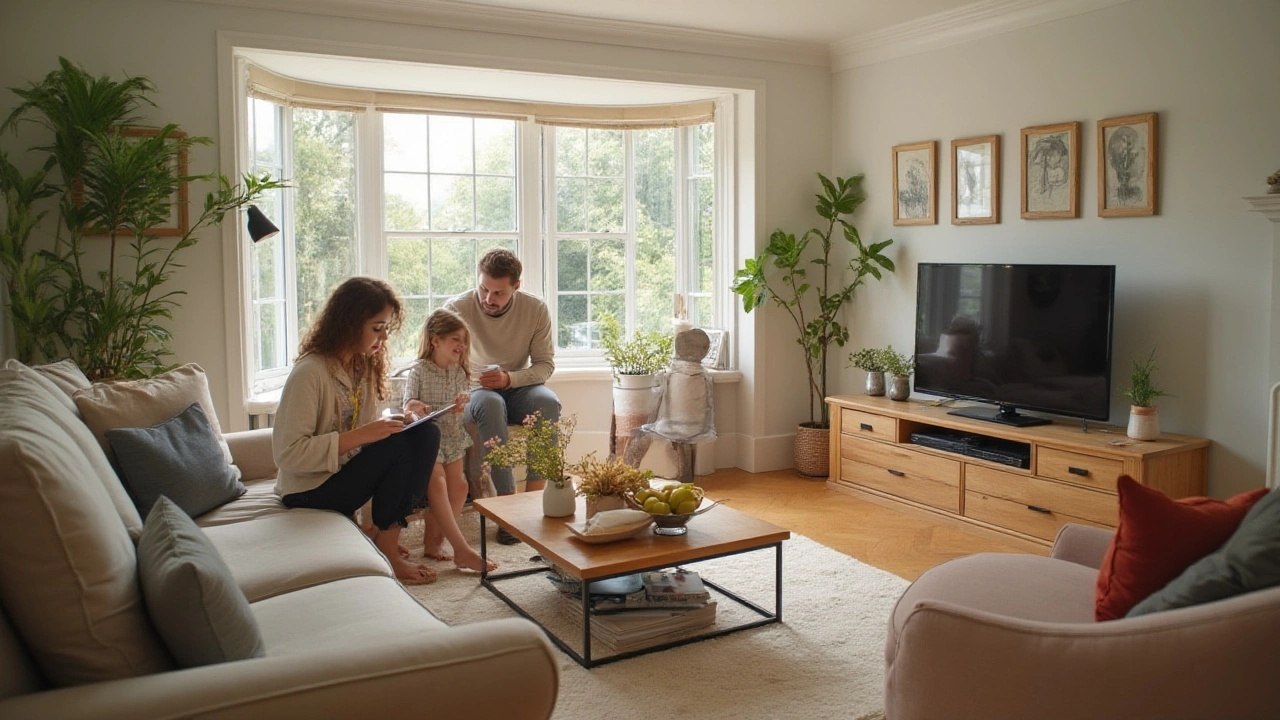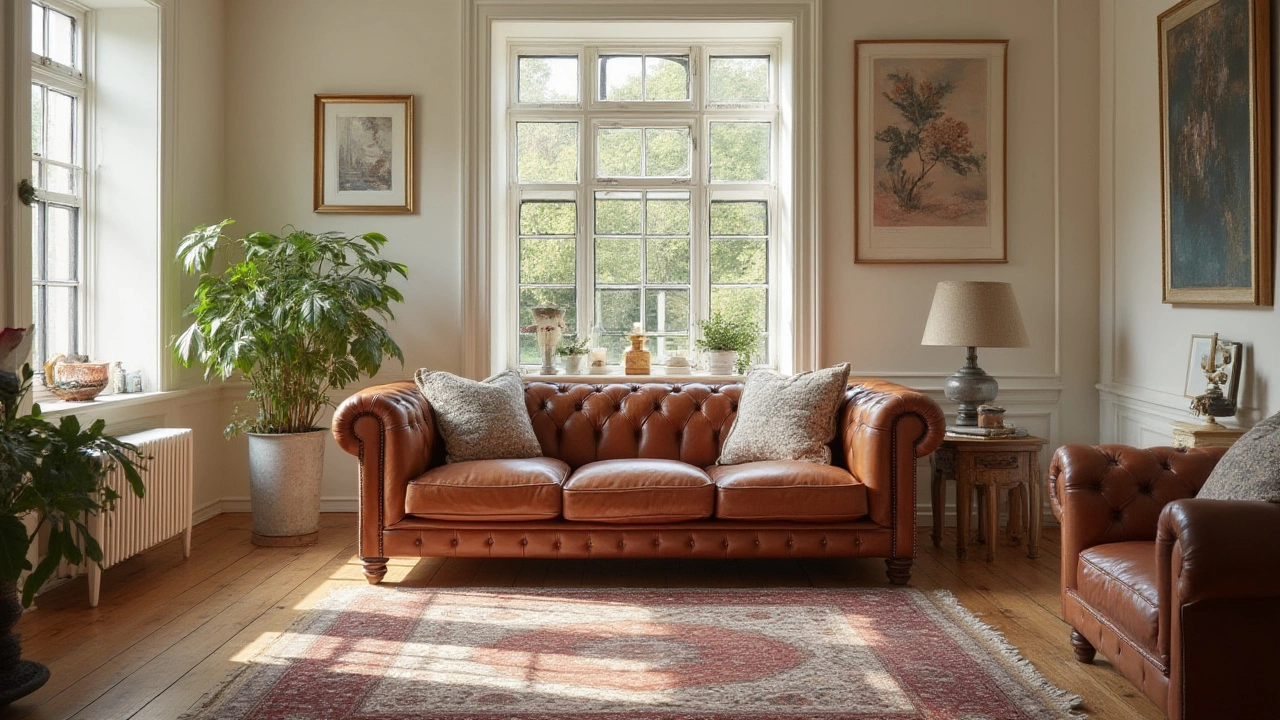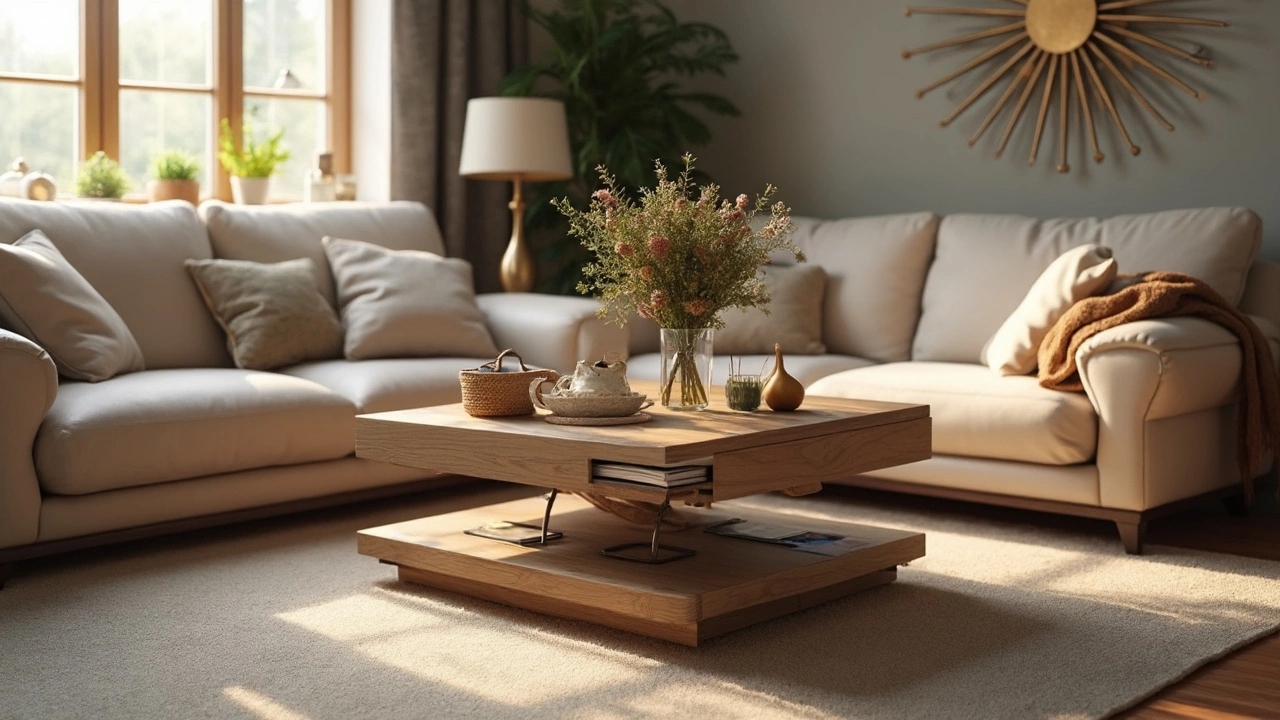Feeling stuck with your living room layout? You’re not alone. Most of us have a couch, a TV, maybe a coffee table, and a vague idea of where everything should go. The good news is you can sort it out in a few simple steps without hiring a designer.
The perfect viewing distance is about 1.5 to 2.5 times the screen’s diagonal. For a 55‑inch TV, that means sitting roughly 6‑9 feet away. Measure the space, then move the sofa until the distance feels comfortable. If your room is smaller, consider a wall‑mounted TV to free up floor space.
A round coffee table should be about two‑thirds the height of your sofa’s seat and leave about 18‑24 inches of clearance around it. This keeps traffic flowing and stops you from constantly bumping into the table. If you love a sleek look, a low‑profile glass table works well with a modern sofa; for a cozy vibe, a wooden square adds warmth.
Don’t forget the rug. Placing a rug under the coffee table helps define the seating area. Aim for the rug to extend at least a foot beyond the table on all sides so the look feels balanced.
Corner sofas are perfect for families, but they can look chaotic if the cushions aren’t arranged right. Start with a pair of larger pillows at each end of the longer side, then add a few medium‑size throws in the middle. A single small accent pillow in a bold color can finish the look without overcrowding.
Mix textures—think linen, velvet, and knit—to add depth. Keep the color palette under control: pick one base color, a contrasting shade, and a pattern that ties the two together.
Your TV stand should be at least the width of the TV, but a little wider looks more balanced. For a 55‑inch TV, a stand around 60‑65 inches works well. If you go wider, you can add decorative books or a plant on each side for visual interest.
Make sure the stand has sturdy supports and enough ventilation for the back of the TV. If you have a larger TV (65 inches) and only a 55‑inch stand, avoid it—over‑loading the stand can cause wobbling and damage.
Small touches make a big difference. A few well‑chosen wall art pieces, a stylish lamp, or a set of floating shelves can tie the room together. Keep the accessories proportional to the furniture; a massive sculpture will overwhelm a modest couch.
Finally, think about flow. Keep pathways at least 30 inches wide so you can move around easily. Test the layout by walking through it—if you feel cramped, pull a piece back a foot or two.
With these straightforward tips, your living room can go from “just a room” to a place you actually want to spend time in. Grab a tape measure, move a piece or two, and enjoy the fresh look you’ve created.

Ever wondered if your coffee table should match your TV stand's height? Here's the lowdown for nailing comfort and style in your living room.
More
Explore which sofa styles remain timeless, why they last, and how to pick one that matches any decor. Make a smart choice for a lasting living room centerpiece.
More
Think your couch belongs flat against the wall? Not so fast. This article digs into why pulling your corner sofa away from the wall can totally change your living room’s look and feel. We cover everything from better traffic flow to improved comfort, plus a few decorating tricks you probably haven’t thought of before. Get smarter about space, light, and style with practical tips you can try right away.
More
Choosing the right coffee table for your reclining sofa is essential to crafting a comfortable and practical living space. This article dives into the different styles and functionalities of coffee tables that pair well with reclining sofas. From adjustable heights to built-in storage, finding a coffee table that suits your needs and space is easier than you might think. Get insights into what features to look for and how to ensure that your living room remains functional and stylish.
More